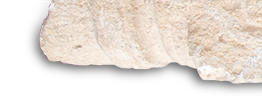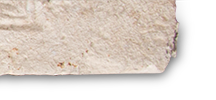Objectives of the Archeological Project Bassana
Protection of nature and cultural heritage
One of the major goals of this project is to protect the cultural heritage and the related natural environment from devastation using active protection. We are witnessing a process of excessive building on the Croatian coast, a process of inappropriate building of apartment complexes, tourist resorts which typically do not contribute to the beauty and harmony of the Mediterranean landscape, and which irreversibly destroy the nature and resources of the local community. The area along the coast between Biograd and Sv. Filip i Jakov is fertile land that has been cultivated and farmed from antiquity to present day. There are olive groves, pastures, small fields and gardens belonging to locals who diligently cultivate their valuable properties. Although the revenues from these small plots may not be high, their regular treatment is an expression of great love for nature and the old way of life that people of this region nurture. Thanks to these efforts, the landscape here has been preserved since ancient times. Today, this coastal strip is declared as agricultural land. Unfortunately though, the battle with invading summer homes and apartments that spread from both towns with a tendency to merge in the future is slowly but surely being lost. This devastating process that destroys the beauty of this part of the Adriatic coast should urgently be stopped by law, ensuring that this strip of fertile coastline is preserved as a natural resource that will enrich the lives of both towns. In this aggressive process of devastation, the archaeological sites do not fare any better than the natural landscape and are often destroyed before the experts get a chance to properly research them. The archaeological and cultural sites that are found in these areas where the space is used intensively additionally suffer not only from the impact of the passage of time but also from the significant devastating impact of the environment. In the past, these processes lasted for centuries and were of lower intensity. In today's world, though, all processes, including the harmful ones, occur much quicker than we would expect and unfortunately the one we talk about develops faster than the reactions from cultural institutions which should offer protection. The aim of the Archaeological Project Bošana is to protect the archaeological site and turn it into a cultural-tourist product through scientific and cultural activities, and efforts to preserve the natural coastal belt. The activities that will promote this project, exploration of the archaeological site, environmental actions, related activities of the Regional Museum of Biograd, as well as those of local organizations and individuals, will all together contribute to the cultural welfare of the community, and the promotion of Biograd as a cultural and educational destination.
Archaeological scientific research
According to the available data, intensive life was recorded in the Roman Empire on the archaeological site Bassana in the period from 1st to 4th century AD and again in the late Middle Ages during the second half of the 11th and during the 12th century in the time of Croatian kings.
Scientific tasks to be carried out during the research in site Bošana :
- Record the existence of a cultural layer prior to the construction of Roman villa rustica;
- Locate the Villa Rustica and all the outside buildings at the Roman farm;
- Locate the route of the branch of the aqueduct Iadera - Biba that fed Bassana;
- Find the remains of the temple of the god Liber;
- Continue the research in the waters in front of the villa, dig out the Roman well, and explore all the submerged port installations;
- Investigate and observe the phases of construction of the villa rustica, especially research for the evidence of continued life in late antiquity and early Middle Ages;
- Explore the cultural layer of the early Middle Ages;
- Investigate the remains and locate the church of St. Andrew;
- Locate the graves from all eras
Development of the Archaeological Park Bassana
The final task of the Archaeological Project Bassana it to design and develop the Archaeological Park Bassana after the scientific research. This cultural and educational format aims to present archaeological findings "in situ", as they were found and what function they had. The found architecture will have to be well conserved, with the possibility that parts of it might need some reconstruction. The task for archaeologists and museum professionals will be to devise a presentation of findings that were discovered during the excavations on the site, and create room for activities to be carried out in the park. The most difficult task will be to devise a modern way to present the archaeological site by connecting the possibilities of the site to be a place for various cultural activities, a place for courses and education, as well as various cultural facilities that will not be exclusively related to archeology. The task that we can already reflect on is how to present the sunken Roman harbor and make it visible and accessible to visitors. The second task, which regards the presentation of the findings on land, is something that still has to wait for the research to be done. It would be the presentation of the remains of the Roman villa and the early Christian church, for which we can not assume dimensions, condition or position on the site yet.
Creation of the Botanical Park Bassana
In order to preserve the natural environment a botanical garden should be created with Mediterranean plants that will gather the rich flora of the Mediterranean in one place. The uniqueness of Dalmatian medicinal Mediterranean herbs is widely known and it is therefore essential to pay tribute, appropriately preserve and present that segment of the nature. This botanical park, in conjunction with the archaeological park, will increase the number of people interested to visit. Both parks would be mobilizers of activity in the region and would provide educational support as well as participate in developmental projects in their respective domains. Archaeological and Botanical parks wouldn't just protect and re-emphasize the past, but also significantly enrich this part of the coast between Biograd and Sv. Filip i Jakov and give new content to cultural and touristic offer of Dalmatia.






